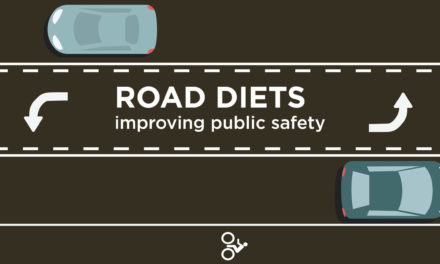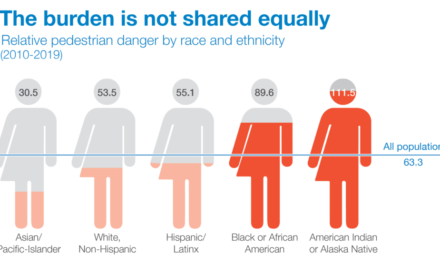Thumbnail: I recently posted a New York Daily News’ column by David Eichenthal, prominent consultant on city finances and justice with the PFM Group. He was also lead consultant on the City of Memphis’ Five Year Strategic Fiscal and Management Plan. He says police and corrections have become sacred cows, with elected officials calling for more police as a show of their commitment to crime reduction, when it is time to reexamine and revamp hiring practices to require standards of professionalism, insist on no tolerance policies toward abuse, and insist on common sense policies limiting the use of force.
To follow up the previous post, here’s a column he recently wrote expanding on the topic:
By David Eichenthal
The killings of Ahmaud Arbery, George Floyd and Breonna Taylor are only the most recent reminders that the greatest challenge our government leaders often face is systemic racism. Systemic racism is the process by which policies, practices, representations and norms work to reinforce racial inequities. Pervasive inequality for the Black community in economic, educational and health outcomes is the result. In the criminal justice system, it has led to policies, patterns of conduct and practices that have often resulted in two types of justice — one Black and one White.
Systemic bias also affects other groups. For example, members of the Latinx community disproportionately live in poverty, face significant health challenges and see many of the same inequities in the criminal justice system as members of the Black community. Bias against members of the LGBTQ communities frequently leads to employment and housing discrimination, targeted hate crimes and police abuse.
But the roots of American racism lie in the “original sin” of slavery and the current focus is appropriately on the impact of systemic racism on the Black community.
Through our work with local governments, my PFM colleagues and I have long recognized that real economic prosperity and fiscal sustainability is only possible when every member of a community has an opportunity to succeed.
Systemic racism — and systemic bias — are fundamentally wrong, unjust and at odds with effective governance and the overall soundness of a local economy.
In other words, it goes against everything that we stand for at PFM and everything that our clients should stand for. But it is not enough to just acknowledge the problem. In our role as trusted advisors to state and local government, we are obligated to act. We have already done so and we are committed to doing more.
The Center for Justice & Safety Finance is one of the critical ways that we have worked to combat systemic racism. In 2017, PFM launched the Center in recognition that at the state and local government level, budgeting is frequently the way that policy gets made.
The Center’s mission is to support state and local governments in developing and implementing safety and justice policies that are effective and efficient in the advancement of both civil rights and civil order. Without both civil rights and civil order, neither can be achieved.
Moreover, with our fiscal expertise, we know that the smartest budget policy is almost always the one that most advances justice. Through our work at the Center we know that:
Police and corrections are usually among the largest areas of spending for local government. In many places, the simple fact is that local governments have over-invested in law enforcement as a response to crime and underinvested in strategies to build communities and tackle inequality.
Over the years we have worked with local governments to shift policy and reallocate spending. In New Orleans, where we served as the expert witness on the fiscal impacts of the consent decree for the Orleans Parish Prison, we made the case throughout that the single best way to achieve a cost effective, constitutional jail was to reduce the size of the jail population.
We also regularly advise our clients that incarceration is one of the costliest responses to crime in a community. We have advocated for alternatives to incarceration, bail reform and investments in programs designed to support individuals as they return to their communities from periods of incarceration as best financial practices as well as best practices in reforming the criminal justice system. And in developing multi-year financial plans, we frequently make the case that local governments should look for savings by reducing the size of their police force and re-investing those savings in programs designed to provide early interventions that would address economic and other challenges faced by at risk individuals.
State and local governments have become overly reliant on fine and fee revenue from the criminal justice system. Criminal justice fines and fees are a regressive poor tax and have a disparate impact on Black and Latinx communities. These streams of revenue are typically high pain for the financial burdens that they impose, and low gain given the difficulty in collection.
We have advocated to local government budget professionals on why this approach is both pennywise and pound-foolish. In addition, our recent work in Ramsey County, Minnesota led to the elimination of eleven fines and fees by the County Commission and we continue to work with county governments in Dallas County and Nashville on similar studies.
There are too many law enforcement officers — both police and corrections officers — who engage in misconduct. Sometimes that misconduct takes the form of discourtesy or a lack of respect and erodes the necessary partnership between the community and law enforcement. And sometimes, as in the case of George Floyd, it results in bodily harm. The human costs are unspeakable. But the cost to local government taxpayers is real as well as abusive behavior by law enforcement costs some cities millions of dollars and can put smaller cities on the brink of bankruptcy.
What Should Local Government Do?
As the Center continues to work with our partners in state and local government, there are a number of steps that every local government should be taking to address systemic racism:
Acknowledge the Problem
In PFM’s work with the National Resource Network, an initiative focused on America’s most economically challenged cities, we frequently found that one of the biggest barriers to economic success was the failure to acknowledge that many of those challenges were the result of systemic racism — and in many cases were vestiges of an era where segregation was not just pervasive, but legal. Local government should start by taking a wide view of the impact of systemic racism in their community — including the specific effects on the criminal justice system. And it should acknowledge that local government policies on zoning, transportation, school districts, economic development and budgeting, to name just a few, have frequently been the cause of disparate outcomes.
Measure and Report It
The first steps toward solving a problem often involve developing and regularly tracking metrics that can help to understand its nature and breadth and where efforts need to be focused to solve it. Local governments need to invest in regularly measuring and reporting on data related to equity in their community. That means collecting data in a way that allows for examination through an equity lens. The current COVID-19 crisis has been a case study on the need for this type of approach. Glaring inequities only became apparent as health departments started to report on cases, hospitalizations and deaths by race, origin and location.
Systemic racism in the criminal justice system persists, in part, because of the lack of transparency.
For example, in policing, departments need to measure not just the number of incidents, but also looking at victimization by race and by income. It means detailed reporting on stops and arrests. And it means reporting not just the number of civilian complaints against officers in a department, but also looking at the race and origin of the complainants and officers involved as well as differences in outcomes.
Finally, most local governments need to make far greater use of non-administrative data in measuring community attitudes. While some local governments have annual citizen satisfaction surveys, they rarely seek sufficient detail to meaningfully measure problems in a community.
Make It a Priority
Acknowledging and measuring problems related to systemic racism are only the beginning. As specific problems and issues are identified at the local level, efforts to address them must become a priority for the local government. In some cases, local lawmakers can seek change through legislation: but it is hard to legislate poverty or health disparities out of existence locally and city councils and county commissions are often constrained by state law pre-emption. There are specific areas, however, where local government can act to undo policy that has promoted segregation.
Local governments generally have control over planning and zoning. The persistence of school and housing segregation are the direct result of local decision-making in these areas. One way for local governments to make ending systemic racism a priority is to require that it be considered in every legislative or planning action that it undertakes. When some local governments wanted to make the environment a priority, they began to require that all new major zoning changes be accompanied by a sensible environmental impact statement. New local laws sometimes require a fiscal note to highlight the importance of budgetary impacts. Similarly, local governments should require Equity Impact Statements for every new ordinance and zoning change.
Still, at the local level, the most important policy tool is often the annual budget. Budgets are not math. They are the clearest and most concrete way that most local governments have to set forth their priorities on an annual basis. In many cases, however, local governments pursue incremental budgeting with little focus on how budgets are tied to outcomes. To make challenging systemic racism a true priority, local governments need to move toward a priority based or budgeting for outcomes approach. This is not only a best practice already recognized by government finance professionals, it is also the best path to ensuring that efforts focusing on equity and inequality are adequately funded initiatives and not just stale rhetoric.
Take a Prevention First Approach
Systemic racism has been built up over centuries. It won’t end in a single calendar or fiscal year. It will take investments that will require time to produce returns. In many communities, elected and appointed leadership will need to change the way that they approach decisions about budgets. The political calendar too often rewards policies and programs that bear results in the short term and neglects efforts where returns are more likely in someone else’s term as Mayor or on the City Council. But prevention programs — focused on education, economic opportunity, health and housing — may be the most important strategies that local government can take to increase equity and tackle systemic racism.
Focus on Collaboration
Local government never has all of the answers to the problems facing their communities. That is certainly true when it comes to issues related to equity and systemic racism. Local government is far better positioned to collaborate than those at the federal or state level. But too often, local government leaders are unwilling to trade any autonomy for the benefits of collaboration.
A government-only approach to reducing systemic racism, however, is doomed to failure. The best ideas will most likely come from a combined effort of leaders across all sectors — the public, advocates, the civic sector and business leaders — with a real opportunity to craft the agenda. And just as there is no one size fits all approach for cities or counties, initiatives and strategies will frequently need to be tailored to the neighborhood level to be effective.
End the War on Crime and Launch a Campaign for Safety and Justice
More than fifty years after it was first declared, we need to end the war on crime. Nationally, the United States still has one of the highest homicides rates among developed nations and one of the highest incarceration rates — even after two and a half decades of decline in homicide rates and a decade of decline in federal and state incarceration rates.
At the local level, the war on crime has meant that the primary (and sometimes only) response to crime has been more police and more jails, with little regard to strategy or impact. In tough fiscal times, budget discussions frequently treat police departments, prosecutors and corrections agencies as “sacred cows” — with the misplaced assumption that any reduction in budget would lead to more crime. Instead, consistent with the prevention first approach outlined above, local leaders need to recognize that investments in efforts to enhance safety and justice — related to social services, education, housing, employment — may be a more effective and less costly use of scarce local government resources than more police and more jail beds.
Rethink the Role of the Police
Police departments should be responsible for enforcing the law and acting to deter crime. In many cities, however, the police have been asked to do much more. In the absence of other essential services, police are sometimes asked to engage in duties more appropriate for other government or social service agencies. It doesn’t make sense to put police departments in charge of initiatives designed to improve quality of life in a neighborhood simply because they are the only resource available. While collaboration with community leaders and across government should be encouraged, we need to stop thinking of the police as the answer to every problem. Rather than adding responsibilities to police departments, we need to shift resources to other parts of local government or the non-profit sector. This will often lead to better outcomes and more efficient use of local government dollars.
To the maximum extent possible, police should limit the use of arrest authority. Citations in lieu of arrest are often an alternative under state law. Officers should also exercise discretion in a way that minimizes even the use of citations unless absolutely necessary.
Rethinking the role of the police will also help them be more effective. A police department more focused on justice and safety will be better positioned to work with communities and to support crime victims. Too often, police are unable to meet their core mandate because crime victims lack trust in law enforcement. As of 2018, less than half (43%) of all victims of violent crime report those crimes to the police.
End the Criminalization of Poverty
In virtually every local jail in the United States, the majority of inmates are being held while they await trial and are often there because they could not afford bail. They have not been convicted of a crime. And the fact that they are in jail while awaiting trial puts them at an extraordinary disadvantage in contesting their charges and demanding their constitutional right to a fair trial. These individuals are also financially harmed while away from their homes and occupations, further adding stress to the community.
In most jurisdictions, the decision as to who ends up in jail falls mostly to local prosecutors. They have to work with judges and others to end the criminalization of poverty. Local policies and rules related to bail drive local incarcerations rates and local budgets. There is little to no rationale for pre-trial detention of individuals accused of misdemeanors: most will not be sentenced to jail time even if they are convicted. And decades of evidence and research support alternatives to bail — primarily release on recognizance — that ensure trial appearances, maintain public safety and reduce the cost of the criminal justice system. In addition, as noted above, local governments — working with states — need to end the use of fees as a revenue source. And fines should only be imposed if they have a real justice effect and only in a manner where they are scaled to the ability to pay.
Reduce Police Misconduct, Abuse and the Cost of Liability
Most police and corrections officers are employed by local governments — large and small, cities and counties. If slavery is America’s original sin, a sad fact is that law enforcement abuse and misconduct have been with us almost as long. A report on the issue by the New York State Senate found that “[T]hose in the humbler walks of life were subject to appalling outrages…They were abused, clubbed and imprisoned, and even convicted of crime on false testimony by policemen…Men of business were harassed and annoyed in their affairs, so that they too, were compelled to bend their necks to the police yoke…” The report is from the 1895 findings of the Lexow Committee.
The obvious statement that most law enforcement officers are good, decent and often heroic misses the point. The problem of misconduct goes well beyond a “few bad apples” — it is both endemic and systemic. Law enforcement — police and sheriffs — have extraordinary powers in the United States: they have the ability to make decisions about personal liberty and freedom, life and death. The very nature of that power leaves it subject to abuse. And throughout the United States, even in the best law enforcement departments and among the very best officers, a culture has developed that has allowed abuse to go largely unchecked.
Strong departmental leadership is critical to any effort to reduce law enforcement misconduct and abuse. To make ending systemic racism a priority at the local level, leaders of local law enforcement agencies must be totally committed to doing so. In police departments, for decades, the first question to a candidate for leadership position has often been “how will you reduce crime?”: instead, police leaders need to be asked “how will you promote safety and justice?”. There simply is no substitute for strong leadership from the top.
That’s because it is up to leadership to advance and demand adherence to specific policies designed to reduce misconduct and abuse. Training and rules are essential, but the decision to hire and retain a police officer, sheriff’s deputy or correction officer may be the most important. Absent effective processes to hire only the best candidates for these positions and strong, effective and clear standards for removing those engaged in misconduct or abuse and hold them accountable, the best rules and best training will fail.
Local governments need to act to reduce law enforcement misconduct and abuse — and its human and financial costs. To do so:
- Police departments and correction agencies should revamp hiring procedures to ensure that every sworn officer meets standards of professionalism. Departments should not provide “second chances” for officers that have been fired or disciplined by other departments.
- Law enforcement agencies should also adopt disciplinary processes that provide “zero tolerance” for abuse and serious misconduct, including the making of false statements and the failure to report acts of misconduct or abuse on the part of other officers.
- Law enforcement agencies need to adopt common sense policies limiting use of force. That means requiring de-escalation and limiting shooting at moving vehicles, among other things.
Any effort to reduce police abuse and misconduct will also require a rethinking of the role of law enforcement unions. Law enforcement unions can play an important role in advocating for the economic rights of their members — and attracting the right workforce for law enforcement will absolutely require competitive compensation. Too often, however, law enforcement unions have advocated for policies that have promoted inequities — from making it harder to investigate and discipline abusive members to lobbying for more police, more jails and more prisons.
There needs to be a serious re-examination of the role of law enforcement unions. Ideally, there would be a way to reform unions so that they continued to advocate for the economic rights of their members without being an impediment to efforts to combat systemic racism.
Require Accountability
Ongoing measurement is merely the first step in ensuring accountability across local government. With respect to systemic racism in the criminal justice system, the following steps are essential:
- There should be civilian review boards to assess complaints against all law enforcement officers — both police and correctional officers. These board should have independent investigators and subpoena power and should make recommendations on all disciplinary actions. These boards, or other departments, should be charged with responsibility for overall oversight of the disciplinary process — with the ability to make recommendations on needed reforms where appropriate. To ensure appropriate funding for oversight, local governments may consider requirements that these agencies are funded as a percentage of the budget for the departments that they are overseeing.
- Department heads should have the final authority over all disciplinary decisions to ensure their accountability. But in those cases where department heads reject or modify the recommendations of the civilian review board, they should be required to explain their actions to the civilian review board.
- Local government leaders should seek legislation creating a state-level independent prosecutor for all cases involving allegations against law enforcement officers — both corrections and police and at the state and local level. The ability of local prosecutors — especially in small and midsize jurisdictions — to effectively investigate and prosecute these cases is very limited. Even in larger jurisdictions, there will always be questions about whether local prosecutors can prosecute cases against law enforcement officers that their offices regularly work with.






